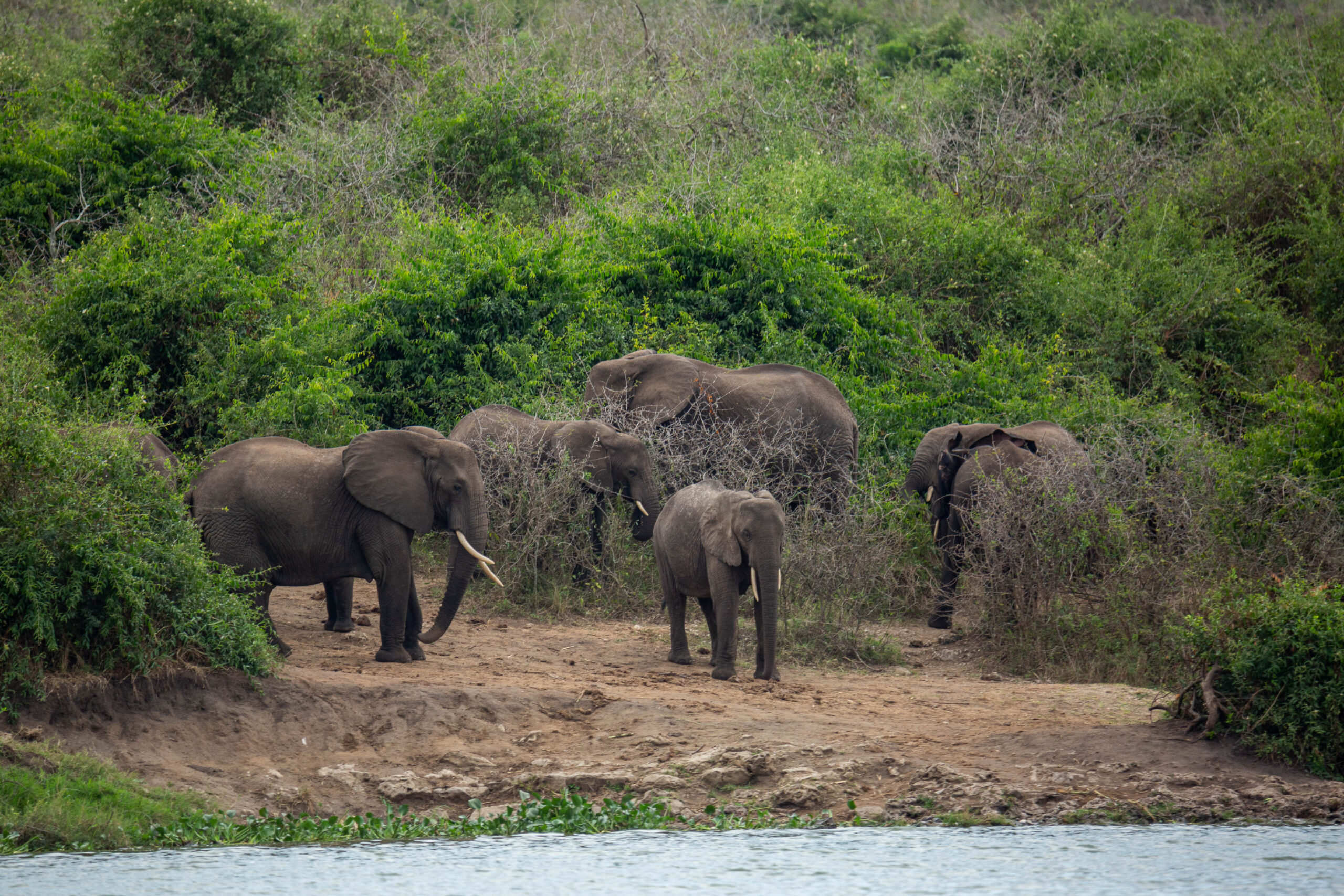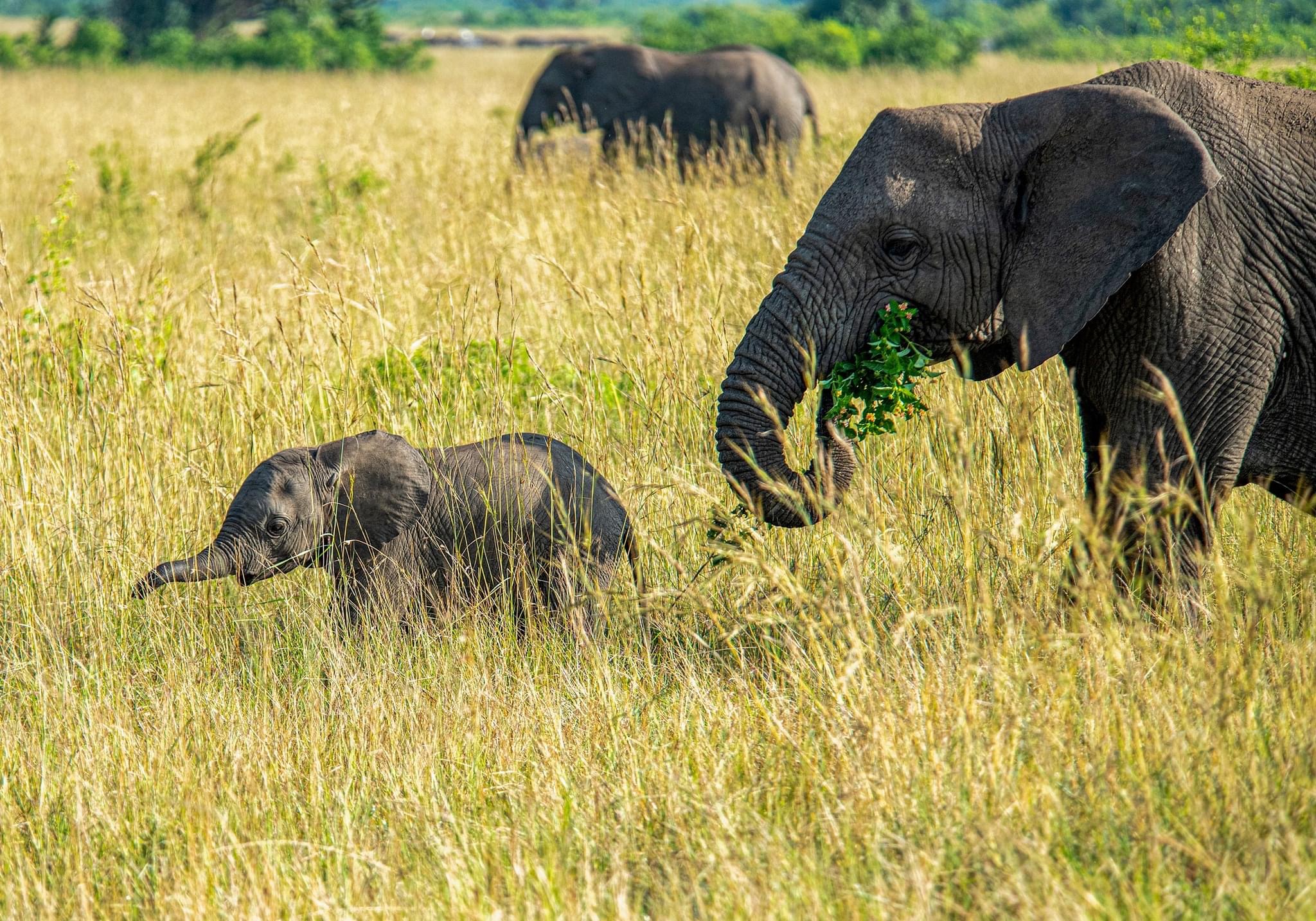The African Elephant “Gentle Giants of the Savanna”, scientifically known as Loxodonta africana (African bush elephant) and Loxodonta cyclotis (African forest elephant), is one of the most magnificent and iconic creatures on our planet. These gentle giants are so essential to the African ecosystem, as they maintaining the delicate balance of nature. This blog will provide you with various aspects of the African Elephant and learn more about them. Learn about their physical characteristics, behavior, habitat, social structure, conservation status, as well as the challenges they faces in the modern world.

Physical Characteristics
The African Elephant is the largest land mammal, boasting impressive physical attributes. Adult males, known as bulls, can stand up to 13 feet tall at the shoulder and weigh around 5 to 6 tons, while females, or cows, are slightly smaller, measuring about 8 to 9 feet at the shoulder and weighing around 2.7 to 3.6 tons. Their most distinguishing feature is their long, flexible trunks, which serve as a versatile tool for feeding, drinking, and communication. Additionally, their large, flapping ears help regulate body temperature by dissipating excess heat. Both male and female elephants possess ivory tusks, elongated incisor teeth, which unfortunately have led to their endangerment due to poaching for the illegal ivory trade.
Behavior and Intelligence
African Elephants are known for their high levels of intelligence and emotional complexity. They display a wide range of behaviors, including communication through vocalizations, body language, and infrasound, which can be heard over long distances. Their social interactions involve strong bonds within family groups, known as herds, led by the oldest and most experienced female, the matriarch. These family units are made up of females and their offspring, while males tend to live more solitary lives or form temporary bachelor groups.
Their intelligence is evident in problem-solving abilities, memory, and even showing empathy towards fellow elephants and other species. Their long lifespan, which can extend up to 60-70 years in the wild, allows them to accumulate extensive knowledge and adaptability, making them critical contributors to their ecosystem.

Habitat and Range
African Elephants primarily inhabit sub-Saharan Africa, where they can be found in various habitats ranging from savannas and grasslands to dense forests and woodlands. Two main subspecies exist: the African bush elephant, which prefers open areas like grasslands and savannas, and the African forest elephant, which inhabits dense, tropical forests. They are migratory animals, following seasonal changes in search of food, water, and suitable breeding grounds.
Places to see The African Elephants include;
- Amboseli National Park
- Tarangire National Park
- Queen Elizabeth National Park
- Murchison Falls National Park
- Serengeti National Park
- Masai Mara National Reserve
- Ngorongoro Conservation Area
- Kidepo Valley National Park etc
Conservation Status
Despite their importance and cultural significance, African Elephants face numerous threats that have led to a decline in their population. The biggest and most pressing challenge is poaching, driven by the illegal ivory trade, which continues to pose a severe threat to their survival. Human-wildlife conflict, habitat loss due to deforestation, and climate change also contribute to the decline in elephant numbers. As a result, both subspecies are among the vulnerable on the International Union for Conservation of Nature (IUCN) Red List of Threatened Species.

Conservation Efforts
Numerous conservation organizations and governmental agencies are actively working to protect African Elephants. These efforts include anti-poaching initiatives, community-based conservation projects that encourage local communities to protect the elephants and their habitats, and advocacy campaigns to combat the illegal ivory trade. Additionally, the establishment of protected areas and wildlife corridors has helped create safe havens for these elephant populations. It also allows them to roam freely without disturbance within these areas.
Conclusion
The African Elephant is not only a symbol of Africa’s natural heritage but also a vital component of its ecosystem. It’s our responsibility to protect and preserve these gentle giants for future generations. This is because it’s one of the most intelligent and inspiring creatures on Earth. By understanding their behavior, respecting their habitat, and combating the various threats they face, we can ensure the survival of this magnificent species and continue to marvel at their grace and majesty in the wild.







